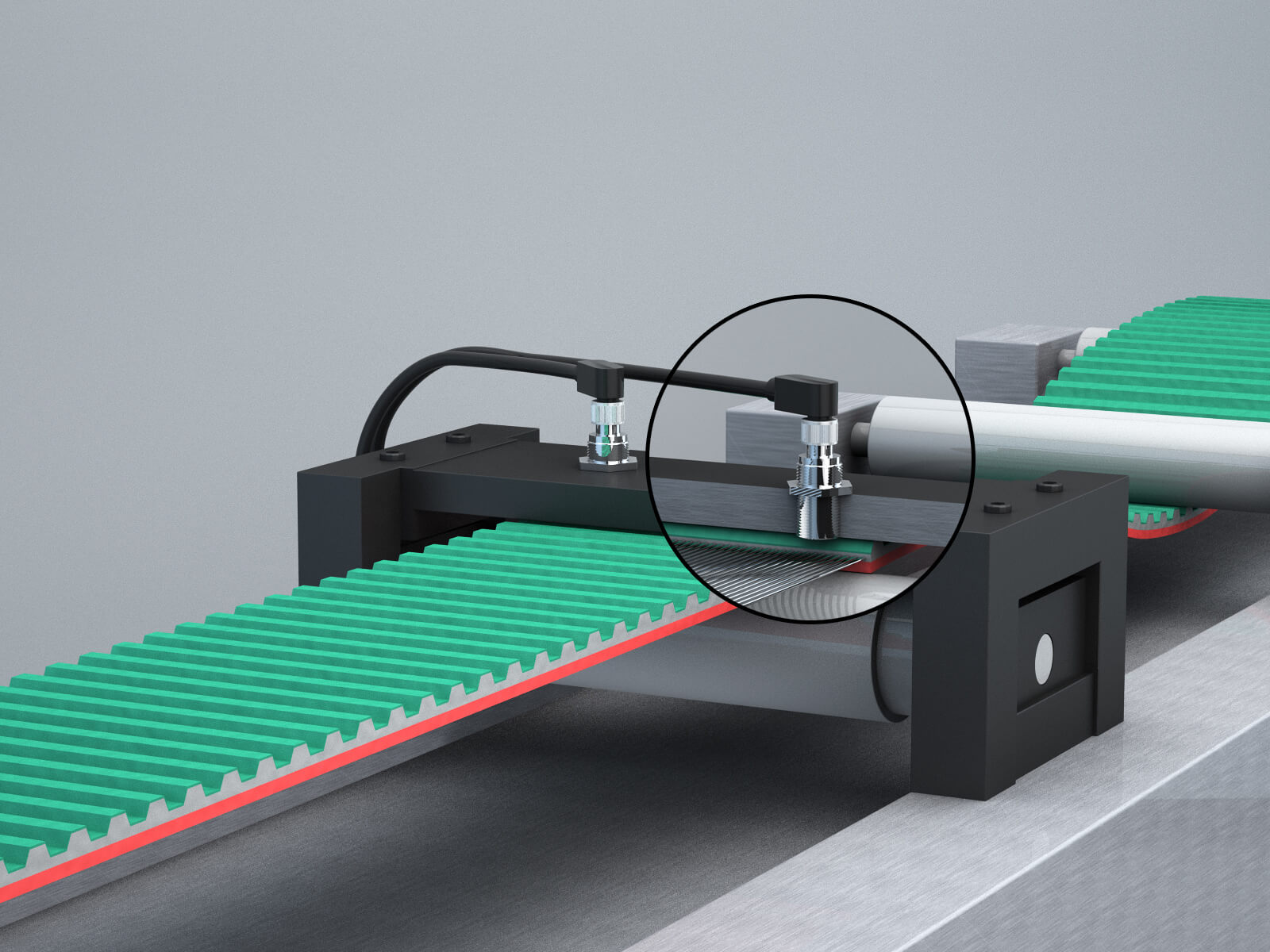Summary
A German manufacturer uses inductive sensors with analog outputs to measure the position of steel reinforcing bands during continuous production of industrial timing belts. Two long-range, high-resolution sensors, mounted above the extruded belt profile, give real-time positional data. The customer’s process-control system monitors the analog voltage outputs, alerting the operator and halting production if the values are outside allowable limits.
Customer Values
- Uninterrupted production as in-process measurement is highly accurate with high sampling rate
- Minimal reject costs as defects are identified in real time
- No restrictions on mounting position as sensors are vibration-resistant and temperature-stable
- Compatibility with existing in-house software owing to 0- to 10-volt analog outputs
- Low risk of mechanical damage with sensing distances up to10mm
Specific Product Advantages
- Exceptional detection accuracy, excellent repeatability and resolution in the micron range
- Sampling rate of 250Hz
- Condist® technology provides extended sensing range ≤ 10mm
- Rugged, vibration-resistant transponders with metal housings
- Industry-standard 0- to 10-volt analog outputs
Customer Application
During manufacture of industrial timing belts, steel reinforcing wires are bonded into the belt carcass as part of a continuous extrusion process. The distance between the reinforcing wires and the belt teeth is a critical parameter, influencing the accuracy of the belt’s fit and other operating characteristics, including service life.
Without a real-time measurement of the position of the reinforcement, engineers can only check product quality at intervals by cutting samples of extruded belts and taking optical measurements. This process is slow and only detects faults some time after production is complete, leading to high reject costs.
The customer requires a real-time system with sensors that measure the position of the steel reinforcement accurately and reliably, providing a 7-volt to 9-volt analog output with a sampling rate of at least 100 hertz. The physical characteristics of the belt dictate a sensing distance of up to 10mm with micron (mm) measurement accuracy.
Customer Solution
Contrinex DW-AS-509-M18-320 Series 509 inductive sensors with analog output are ideal for this application. Patented Condist® technology provides a highly stable sensing performance at operating distances ≤10mm with exceptional detection accuracy, excellent repeatability and resolution in the micron range.
DW-AS-509-M18-320 sensors sample at 250Hz, ideal for measuring the position of the steel reinforcement in the fast-moving belt profile, and provide continuous, non-linearized 0- to 10-volt analog output signals. They are resistant to vibration and variations in ambient temperature, allowing positioning immediately after the extrusion press in close proximity to the moving belt.
Two sensors, set flush into a non-metallic plate, are mounted directly above the surface of the belt as it runs over a guide roller, giving a stable reference position. The lightly tensioned belt clears the sensing face of the devices by a few tenths of a millimeter. Connection to the customer’s control system is via a flexible cable with an easily detachable S12 connector.
Previously, it was impossible to check the position of the steel reinforcement without stopping the extrusion process, which incurred downtime or risked high reject costs. Contrinex analog inductive sensors satisfy the requirement for small, high-accuracy, ultra-reliable sensors with an attractive total cost of ownership.
